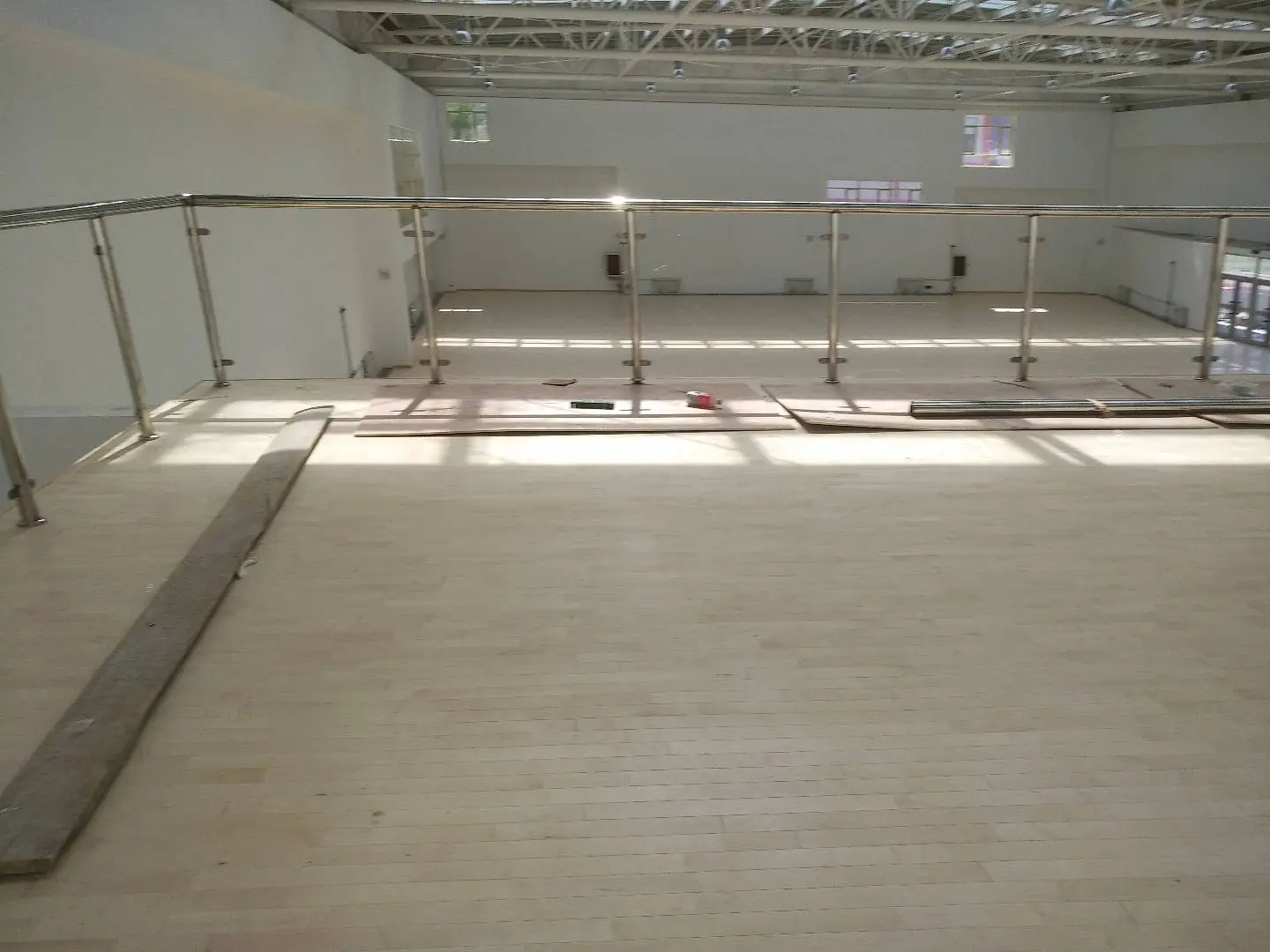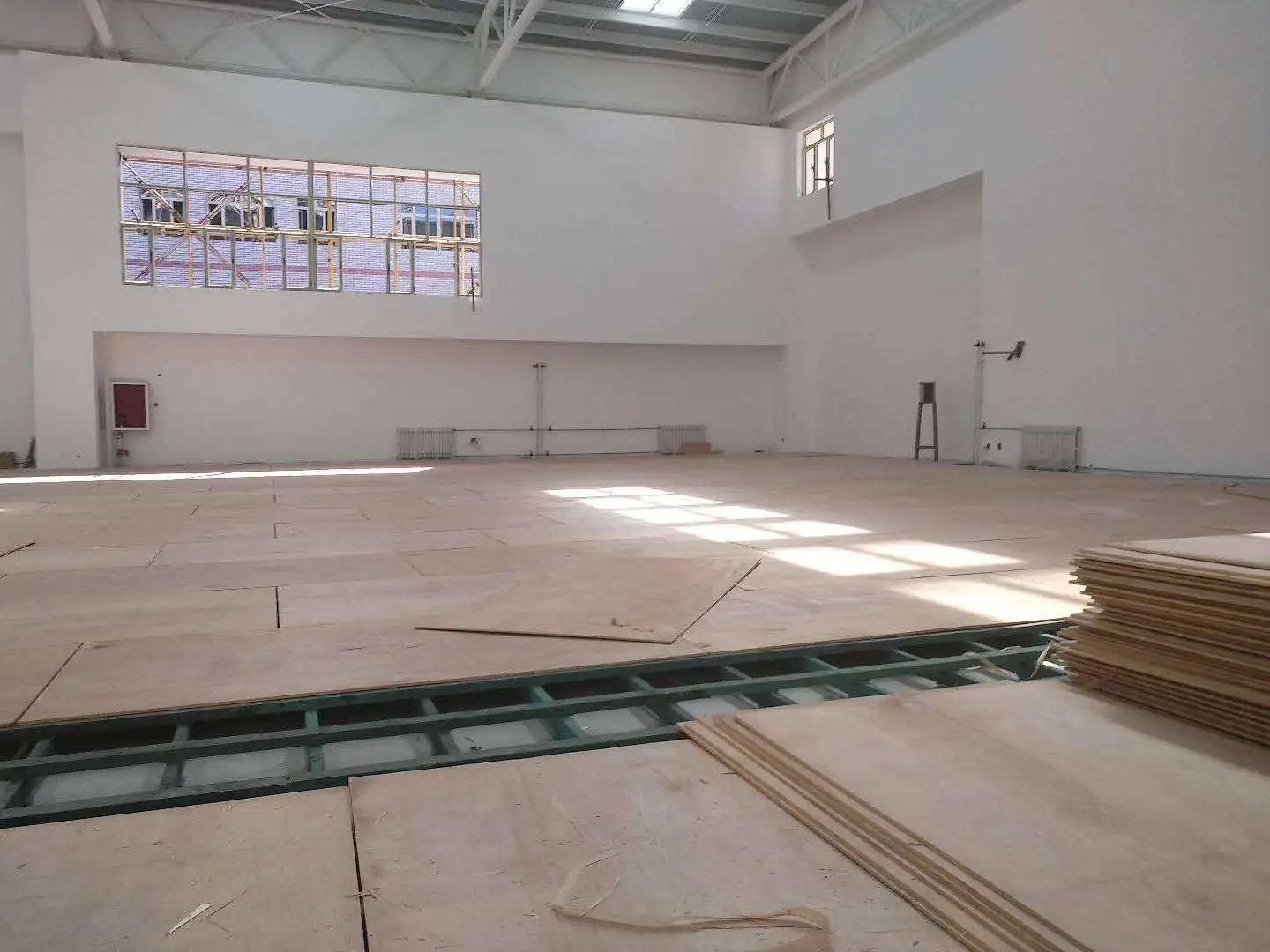The Art of Sports Flooring Installation: Ensuring Flatness, Adhesion, and Long-Term Stability
Installing high-quality sports wood flooring isn’t just about picking the right material—it’s about ensuring the installation process is executed correctly to maintain performance, durability, and safety over time. A poor installation can lead to uneven surfaces, gaps, and premature wear, compromising not only the aesthetic appeal but also the functionality of the flooring.

1. Flatness: The Foundation of a Safe and Functional Floor
Flatness is one of the most crucial aspects when installing sports wood flooring. Any imperfections in the subfloor will directly affect the performance of the sports floor, leading to uneven surfaces, tripping hazards, and potential injuries. A level floor also plays a key role in ensuring proper adhesion, stability, and the overall aesthetic of the installation.
Preparation is Key: Before installing the floorboards, it’s vital to ensure that the subfloor is smooth, level, and dry. Even minor irregularities in the subfloor can cause major issues in the long run, such as boards that shift or buckle. Concrete floors, in particular, should be thoroughly tested for moisture levels, as excess moisture can lead to warping and the deterioration of the wood.
Tip: Use a long level or laser tool to check the subfloor’s flatness. Any uneven areas should be corrected before proceeding with the installation.
2. Adhesion: The Glue That Holds It All Together
Proper adhesion is essential for maintaining the integrity of the sports floor. A strong adhesive bond ensures that the wood stays firmly in place, preventing any shifting or gaps between planks. However, not all adhesives are created equal. The type of adhesive used depends on the flooring material, subfloor type, and environmental conditions.
Choosing the Right Adhesive: For wood sports flooring, polyurethane and moisture-cured adhesives are commonly used because of their durability and moisture resistance. These adhesives form a strong bond between the wood and the subfloor, which helps prevent delamination and movement over time. It's also important to ensure the adhesive is applied evenly and allowed to cure fully before any foot traffic or heavy equipment is placed on the floor.
Tip: Follow the manufacturer’s recommendations on adhesive type and application. Different adhesives are designed for specific conditions, so using the wrong one can compromise the floor’s performance.
3. Stability: Ensuring Long-Term Durability and Performance
The stability of sports flooring goes beyond just adhesion. It involves ensuring that the flooring system is robust enough to withstand the constant impact of sports activities, heavy foot traffic, and changes in environmental conditions like temperature and humidity. A well-installed sports wood floor should maintain its structure and performance for many years with minimal maintenance.
Climate Control and Expansion Gaps: One of the most important aspects of stability is managing how the floor expands and contracts due to temperature and humidity changes. Wood is a natural material, and it will react to changes in its environment. That’s why it’s essential to leave expansion gaps around the perimeter of the floor, allowing the material to shift without causing buckling or warping.
Additionally, it’s important to maintain consistent temperature and humidity levels within the facility. Extreme fluctuations in these factors can cause the wood to expand or contract unpredictably.
Tip: Always allow for proper expansion gaps around the edges of the room, and maintain stable environmental conditions to ensure the floor’s longevity.

4. The Importance of Professional Installation
While DIY installation might seem like an attractive option to save money, sports wood flooring installation is a highly technical process that requires specialized knowledge and skills. Professional installers have the expertise to handle the nuances of sports flooring, ensuring that every aspect—from flatness to adhesion to stability—is executed to the highest standards.
Tip: Hiring a professional installer ensures that your floor is not only correctly installed but also backed by a warranty. A job done right the first time can save you from costly repairs and premature replacements in the future.
5. Maintenance After Installation: Keeping It Stable
Even with a proper installation, regular maintenance is essential to keeping your sports wood flooring stable and functional. Routine cleaning, moisture control, and periodic inspections will ensure that the floor continues to perform optimally. It’s also important to address any issues, such as loose boards or cracks, promptly to prevent them from worsening over time.
Tip: Regularly inspect the floor for any signs of wear, particularly after heavy usage, and address issues immediately to maintain the integrity of the flooring.
The installation of sports wood flooring is a highly specialized task that involves careful preparation, the right materials, and expert craftsmanship. Ensuring flatness, proper adhesion, and long-term stability through professional installation practices will guarantee a floor that not only looks great but performs well for years. With the right installation and regular maintenance, your sports floor will provide a safe and durable surface for athletes and withstand the test of time.